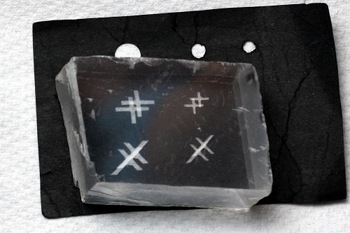What it shows:
Linearly polarized light, propagating down a long glass tube filled with corn syrup, is made to rotate its direction of polarization by the optically active corn syrup. The intensity of the 90° scattered light varies dramatically, in a periodic manner, along the length of the tube -- the intensity being zero when the dipole radiators oscillate in the line of sight direction, and maximum intensity when they oscillate perpendicular to the line of sight. Scattered light is most intense when the electric field vector is perpendicular to the line of sight.
...
Read more about Syrup Tube
 ...
...